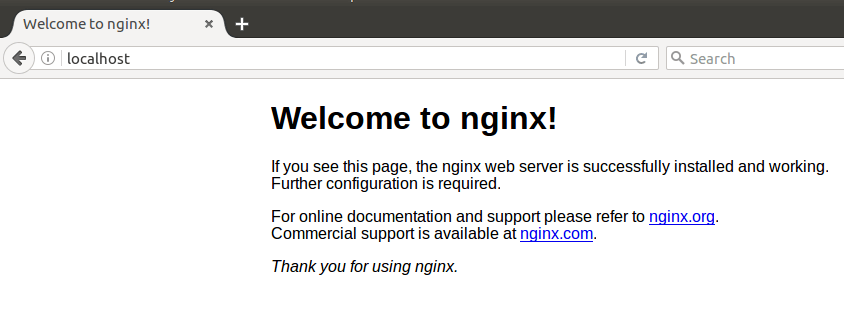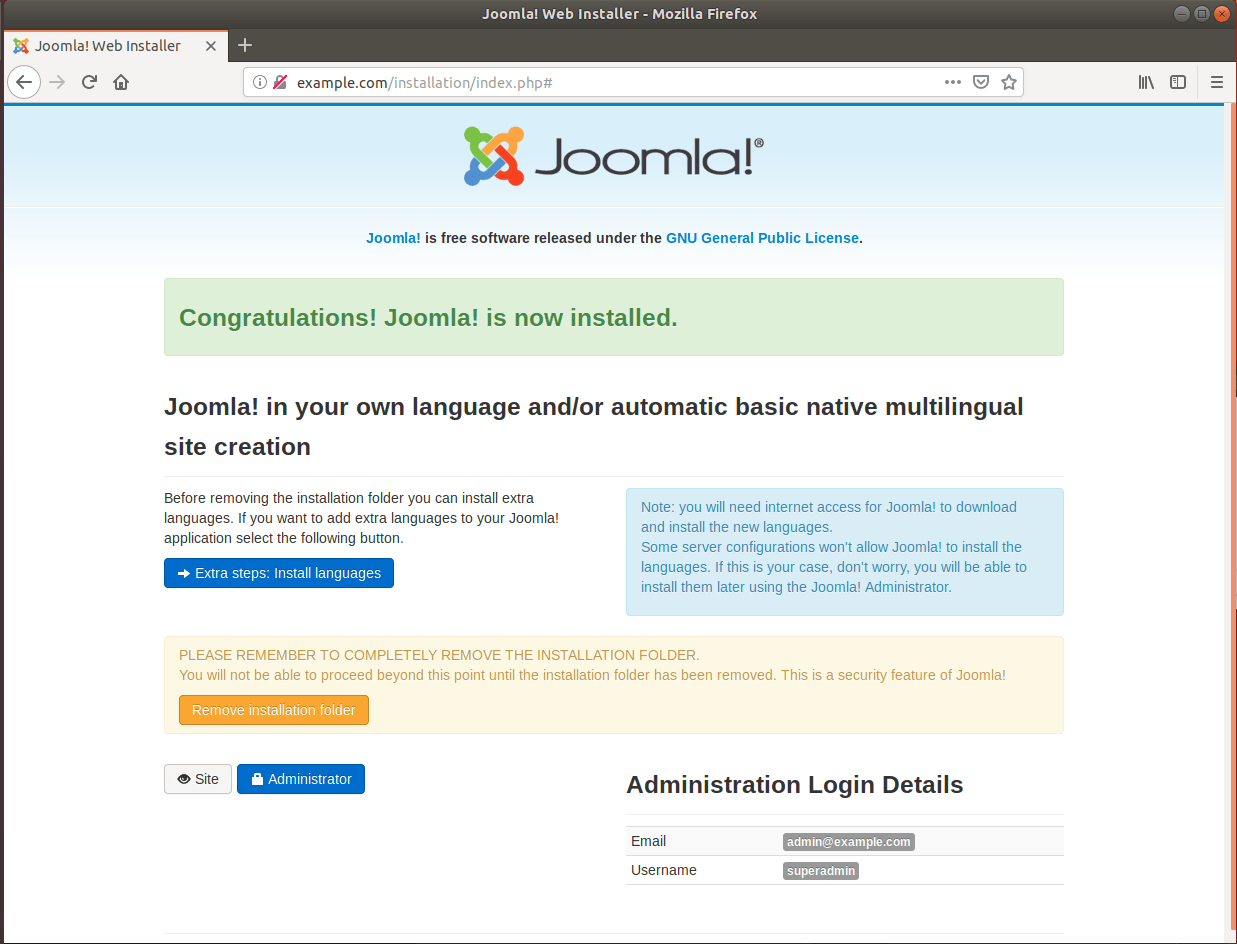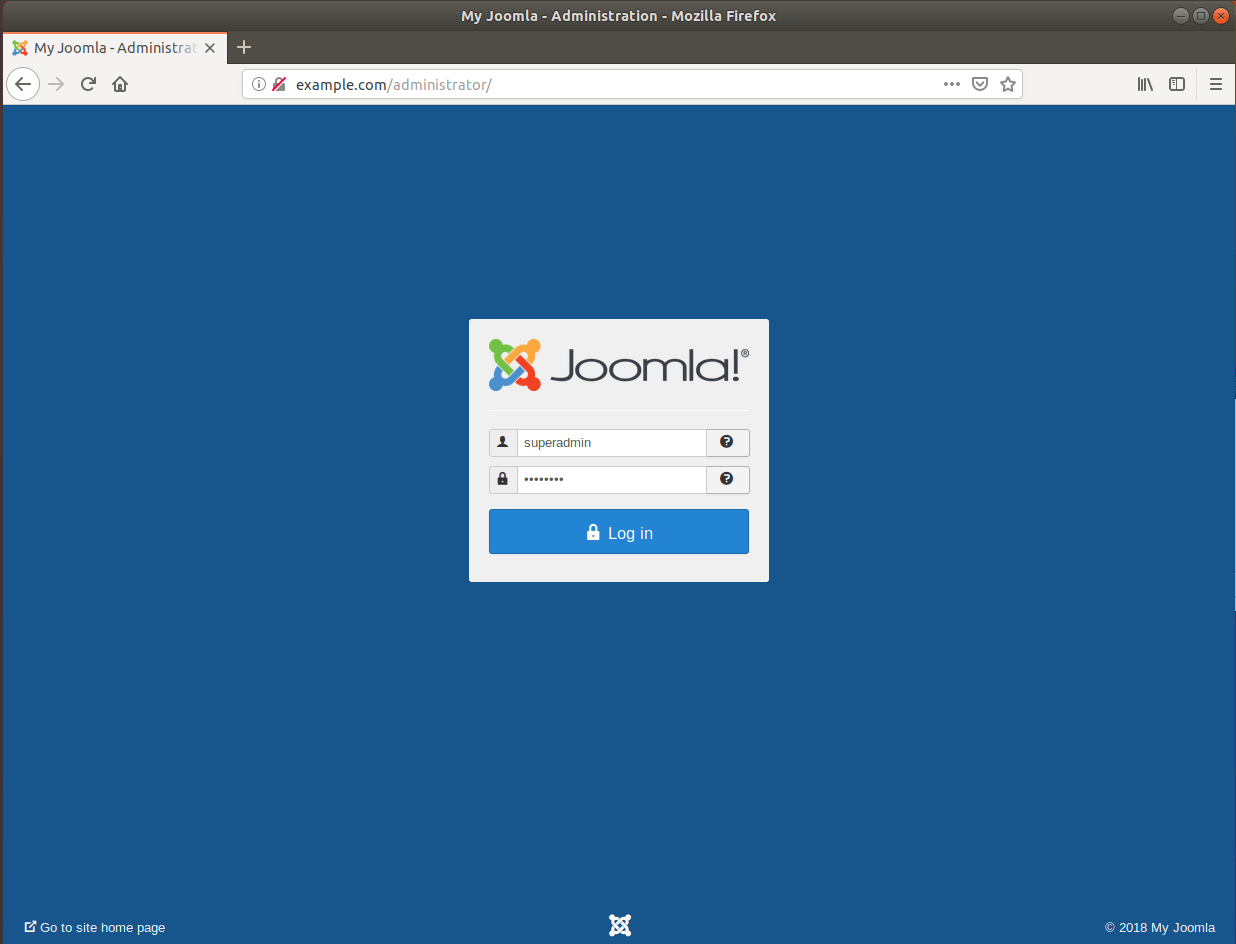This short post shows students and new users how to install and use the Joomla content management system (CMS) on Ubuntu Linux with the Nginx HTTP web server. This post will also have a link to set up free Let’s Encrypt SSL certificates to protect your Joomla websites and applications.
Joomla is a free and open source CMS based on PHP and MySQL that also has many features and thousands of plugins and templates or themes. If you want to create a website or an online store, Joomla might be the easiest way to do it, especially if you will need user support to manage and maintain the site.
This tutorial is based on Ubuntu Linux. We will install the Nginx web server, the MariaDB database server and the PHP modules. We will also link to another post that will show you how to protect your Joomla website using free SSL certificates from Let’s Encrypt.
For more information on Joomla, see your Homepage
To start installing Joomla on Ubuntu Linux, follow the steps below:
How to install Nginx on Ubuntu Linux
As mentioned above, we will use the Nginx web server to run Joomla. Joomla requires a web server to function, and Nginx is one of the most popular open source web servers available today.
To install Nginx on Ubuntu, run the following commands:
sudo apt update sudo apt install nginx
After installing Nginx, the following commands can be used to stop, start and enable Nginx services always start every time your server starts.
sudo systemctl stop nginx.service sudo systemctl start nginx.service sudo systemctl enable nginx.service
To test if Nginx is installed and working, open your web browser and look for the IP address or hostname of the server.
http: // localhost

If you see the above page in the browser, then Nginx is working as expected.
How to install MariaDB on Ubuntu Linux
A database server is required for Joomla to work. Joomla stores its content in a database and MariaDB is probably the best database server available to run Joomla.
MariaDB is fast, secure, and the default server for almost all Linux servers. To install MariaDB, run the following commands:
sudo apt install mariadb-server sudo apt install mariadb-client
After installing MariaDB, the following commands can be used to stop, start and enable MariaDB services always start when the server starts.
sudo systemctl stop mariadb.service sudo systemctl start mariadb.service sudo systemctl enable mariadb.service
Then run the following commands to protect the database server with a root password if you were not prompted to do so during installation.
sudo mysql_secure_installation
When prompted, use the guide below to respond:
If you've just installed MariaDB, and haven't set the root password yet, you should just press enter here. Enter current password for root (enter for none): PRESS ENTER Switch to unix_socket authentication [Y/n] n Change the root password? [Y/n] n Remove anonymous users? [Y/n] y Disallow root login remotely? [Y/n] y Remove test database and access to it? [Y/n] y Reload privilege tables now? [Y/n] y All done!
To verify and validate that MariaDB is installed and working, log into the database console using the following commands:
sudo mysql -u root -p
It should automatically log into the database server as we started the login request as root. Only root can login without password and only from server console.

If you see a screen similar to the one shown above, then the server installed successfully.
How to install PHP-FPM on Ubuntu Linux
As we also mentioned earlier, we are installing PHP on Ubuntu as Joomla requires it. The PHP packages are added to the Ubuntu repositories. Repository versions may not be the latest. If you need to install the latest versions, you will need to add a third-party PPA repository.
In a third-party repository with the latest versions of PHP, run the following commands.
sudo apt-get install software-properties-common sudo add-apt-repository ppa:ondrej/php
At the time of writing, the latest version of PHP 8.0.
sudo apt update
Then run the following commands to install PHP 8.0 and related modules.
sudo apt install php8.0-fpm php8.0-common php8.0-mysql php8.0-gmp php8.0-curl php8.0-intl php8.0-mbstring php8.0-xmlrpc php8.0-gd php8.0-xml php8.0-cli php8.0-zip
Once PHP is installed, the following commands can be used to start, stop, and allow the PHP-FPM services to start automatically when the server starts.
sudo systemctl stop php8.0-fpm sudo systemctl start php8.0-fpm sudo systemctl enable php8.0-fpm
Next, you’ll want to change some PHP configuration settings that work great with Joomla. Run the following commands to open the default PHP configuration file.
sudo nano /etc/php/8.0/fpm/php.ini
Then change the line settings to be somewhat aligned with the lines below. Save your changes and exit.
file_uploads = On allow_url_fopen = On short_open_tag = On memory_limit = 256M cgi.fix_pathinfo = 0 upload_max_filesize = 100M max_execution_time = 360 date.timezone = America/Chicago
How to create a Joomla database in Ubuntu
At this point, we are ready to create a Joomla database. As mentioned above, Joomla uses databases to store its content.
To create a database for Joomla, run the following commands:
sudo mysql -u root -p
Then create a database called joomladb
CREATE DATABASE joomladb;
Next, create a database user named joomladbuser and set password
CREATE USER 'joomladbuser'@'localhost' IDENTIFIED BY 'new_password_here';
Then grant the user full access to the database.
GRANT ALL ON joomladb.* TO 'joomladbuser'@'localhost' WITH GRANT OPTION;
Finally, save your changes and exit.
FLUSH PRIVILEGES; EXIT;
How to download Joomla
We are ready to download Joomla and start configuring it. First, run the following commands to download the latest version of Joomla from your repository.
To see the Joomla releases, see this page.
At the time of writing this article, the latest version is 4.0.4. The future version will have different links to download.
Run the following commands to download and extract the Joomla version 4.0.4.
cd /tmp wget https://downloads.joomla.org/cms/joomla4/4-0-2/Joomla_4-0-2-Stable-Full_Package.zip sudo unzip -d /var/www/joomla /tmp/Joomla_4-0-2-Stable-Full_Package.zip
Then run the command below to allow www-data user own the Joomla directory.
sudo chown -R www-data:www-data /var/www/joomla/ sudo chmod -R 755 /var/www/joomla/
How to configure Nginx for Joomla
We have downloaded the Joomla content into a new folder called Joomla. Now, let’s configure Nginx to create a new server block to use with our Joomla website. You can create so many server blocks with Nginx.
To do that, run the following commands to create a new configuration file called joomla.conf at / etc / nginx / sites-available / directory to host our Joomla server block.
sudo nano /etc/nginx/sites-available/joomla.conf
In the archive, copy and paste the content below in the archive and save it.
server {
listen 80;
listen [::]:80;
root /var/www/joomla;
index index.php index.html index.htm;
server_name example.com www.example.com;
client_max_body_size 100M;
autoindex off;
location / {
try_files $uri $uri/ /index.php?$args;
}
# deny running scripts inside writable directories
location ~* /(images|cache|media|logs|tmp)/.*.(php|pl|py|jsp|asp|sh|cgi)$ {
return 403;
error_page 403 /403_error.html;
}
location ~ .php$ {
include snippets/fastcgi-php.conf;
fastcgi_pass unix:/run/php/php8.0-fpm.sock;
fastcgi_param SCRIPT_FILENAME $document_root$fastcgi_script_name;
include fastcgi_params;
}
}
Save the file and close.
After saving the above file, run the following commands to enable the new file that contains our Joomla server block. Restart Nginx after that.
sudo ln -s /etc/nginx/sites-available/joomla.conf /etc/nginx/sites-enabled/ sudo systemctl restart nginx.service
At this stage, Joomla is ready and can be started by going to the IP or hostname of the server.
http://localhost
However, we want to make sure our server is protected with free Let’s Encrypt SSL certificates. So, continue below to learn how to generate Let’s Encrypt SSL certificate for websites.
How to configure Let’s Encrypt for Joomla
We have written an excellent post on how to generate and manage Let’s Encrypt SSL certificates for the Nginx web server. You can use that post to apply it here for your Joomla website.
To read the post on how to generate Let’s Encrypt SSL certificates for the website, click the link below:
How to set up Let’s Encrypt on Ubuntu Linux with Nginx
If you were successful in generating a Let’s Encrypt SSL certificate, you need to reopen the server block for our Joomla website by running the following commands.
sudo nano /etc/nginx/sites-available/joomla.conf
The new Joomla server block configurations should look similar to the line below. Take notes on the highlighted lines.
- The first server block listens on port 80. It contains a 301 redirect to redirect HTTP to HTTPS.
- The second server block listens on port 443. It contains a 301 redirect to redirect www to a domain other than www.
server {
listen 80;
listen [::]:80;
root /var/www/joomla;
index index.php index.html index.htm;
server_name example.com www.example.com;
include snippets/well-known.conf;
return 301 https://$host$request_uri;
}
server {
listen 443 ssl http2;
listen [::]:443 ssl http2;
root /var/www/joomla;
index index.php index.html index.htm;
server_name www.example.com;
ssl_certificate /etc/letsencrypt/live/example.com/fullchain.pem;
ssl_certificate_key /etc/letsencrypt/live/example.com/privkey.pem;
ssl_trusted_certificate /etc/letsencrypt/live/example.com/chain.pem;
ssl_protocols TLSv1 TLSv1.1 TLSv1.2 TLSv1.3;
ssl_ciphers ECDHE-ECDSA-AES128-GCM-SHA256:ECDHE-RSA-AES128-GCM-SHA256:ECDHE-ECDSA-AES256-GCM-SHA384:ECDHE-RSA-AES256-GCM-SHA384:ECDHE-ECDSA-CHACHA20-POLY1305:ECDHE-RSA-CHACHA20-POLY1305:DHE-RSA-AES128-GCM-SHA256:DHE-RSA-AES256-GCM-SHA384;
add_header Strict-Transport-Security "max-age=31536000; includeSubDomains";
include snippets/well-known.conf;
return 301 https://example.com$request_uri;
}
server {
listen 443 ssl http2;
listen [::]:443 ssl http2;
root /var/www/joomla;
index index.php index.html index.htm;
server_name example.com;
ssl_certificate /etc/letsencrypt/live/example.com/fullchain.pem;
ssl_certificate_key /etc/letsencrypt/live/example.com/privkey.pem;
ssl_trusted_certificate /etc/letsencrypt/live/example.com/chain.pem;
ssl_protocols TLSv1 TLSv1.1 TLSv1.2 TLSv1.3;
ssl_ciphers ECDHE-ECDSA-AES128-GCM-SHA256:ECDHE-RSA-AES128-GCM-SHA256:ECDHE-ECDSA-AES256-GCM-SHA384:ECDHE-RSA-AES256-GCM-SHA384:ECDHE-ECDSA-CHACHA20-POLY1305:ECDHE-RSA-CHACHA20-POLY1305:DHE-RSA-AES128-GCM-SHA256:DHE-RSA-AES256-GCM-SHA384;
ssl_prefer_server_ciphers on;
ssl_session_cache shared:SSL:50m;
ssl_session_timeout 1d;
ssl_session_tickets off;
ssl_stapling on;
ssl_stapling_verify on;
resolver 8.8.8.8 8.8.4.4 valid=300s;
resolver_timeout 30s;
ssl_dhparam /etc/ssl/certs/dhparam.pem;
add_header Strict-Transport-Security "max-age=31536000; includeSubDomains";
add_header X-Frame-Options SAMEORIGIN;
add_header X-Content-Type-Options nosniff;
include snippets/well-known.conf;
client_max_body_size 100M;
autoindex off;
location / {
try_files $uri $uri/ /index.php?$args;
}
# deny running scripts inside writable directories
location ~* /(images|cache|media|logs|tmp)/.*.(php|pl|py|jsp|asp|sh|cgi)$ {
return 403;
error_page 403 /403_error.html;
}
location ~ .php$ {
include snippets/fastcgi-php.conf;
fastcgi_pass unix:/run/php/php8.0-fpm.sock;
fastcgi_param SCRIPT_FILENAME $document_root$fastcgi_script_name;
include fastcgi_params;
}
}
Save the file above, then restart Nginx and PHP using the commands below.
sudo systemctl reload nginx sudo systemctl reload php8.0-fpm
Finally, if everything went according to plan, you should be able to start the Joomla setup wizard by navigating to the server’s hostname or IP address via HTTPS.
https://example.com/
A Joomla setup wizard should appear. Follow the wizard to complete the setup.
Select the installation language, site name, superuser account details, including email address, username, and password.
Then click Next to continue.

On the next screen, enter the information for the database created earlier and click Next to continue.

Then validate that all the requirements and packages are installed.
After that, click Install on pc to complete the wizard.

Now you can log into the administration backend and start setting up your website environment.

When you’re done, Joomla should be installed and ready to go. Log in as an administrator and start setting up your site.

That is all!
Conclusion:
In this tutorial we have seen how to install Joomla on Ubuntu Linux with a link to configure Let’s Encrypt. If you find any errors above, or have something to add, use the comment form below.



